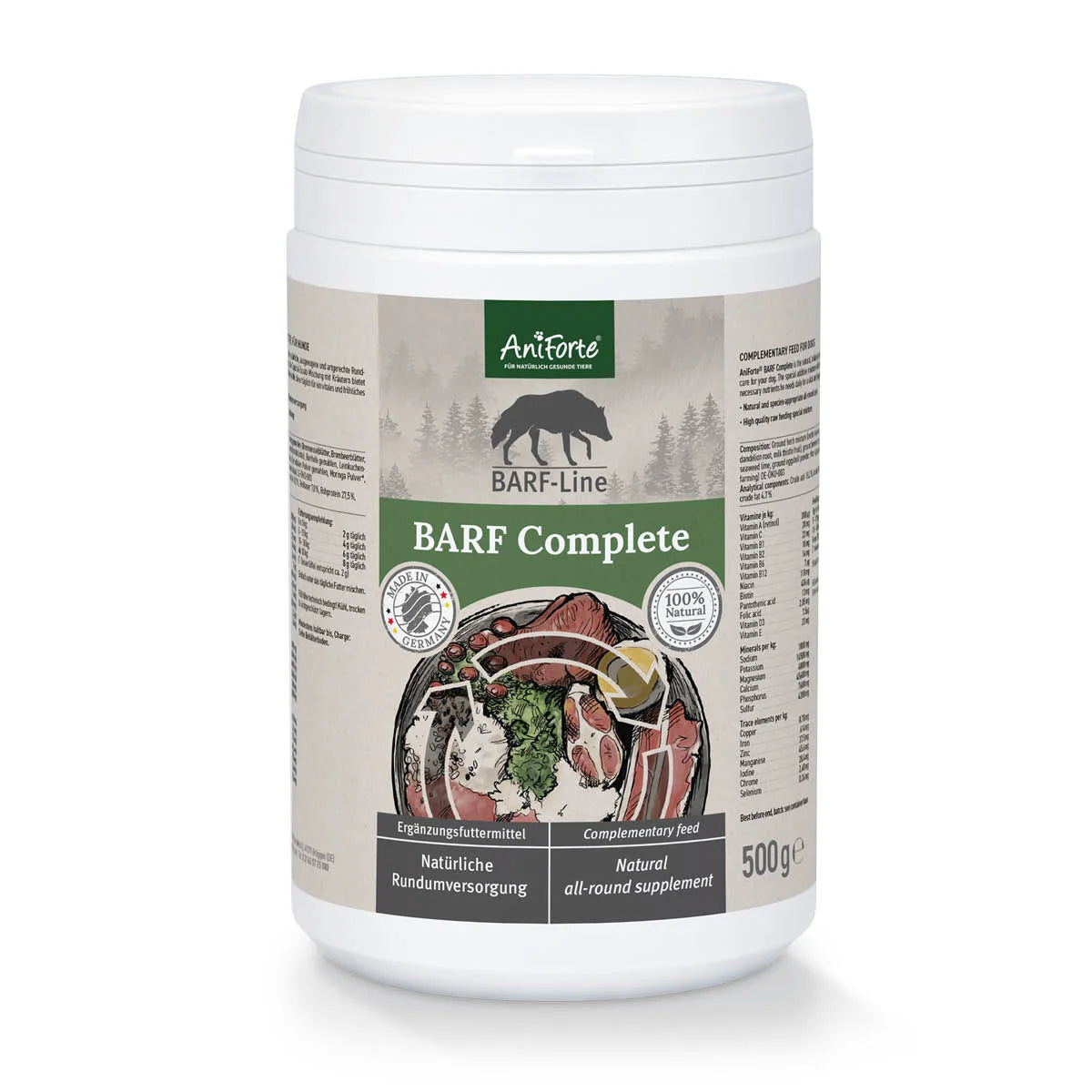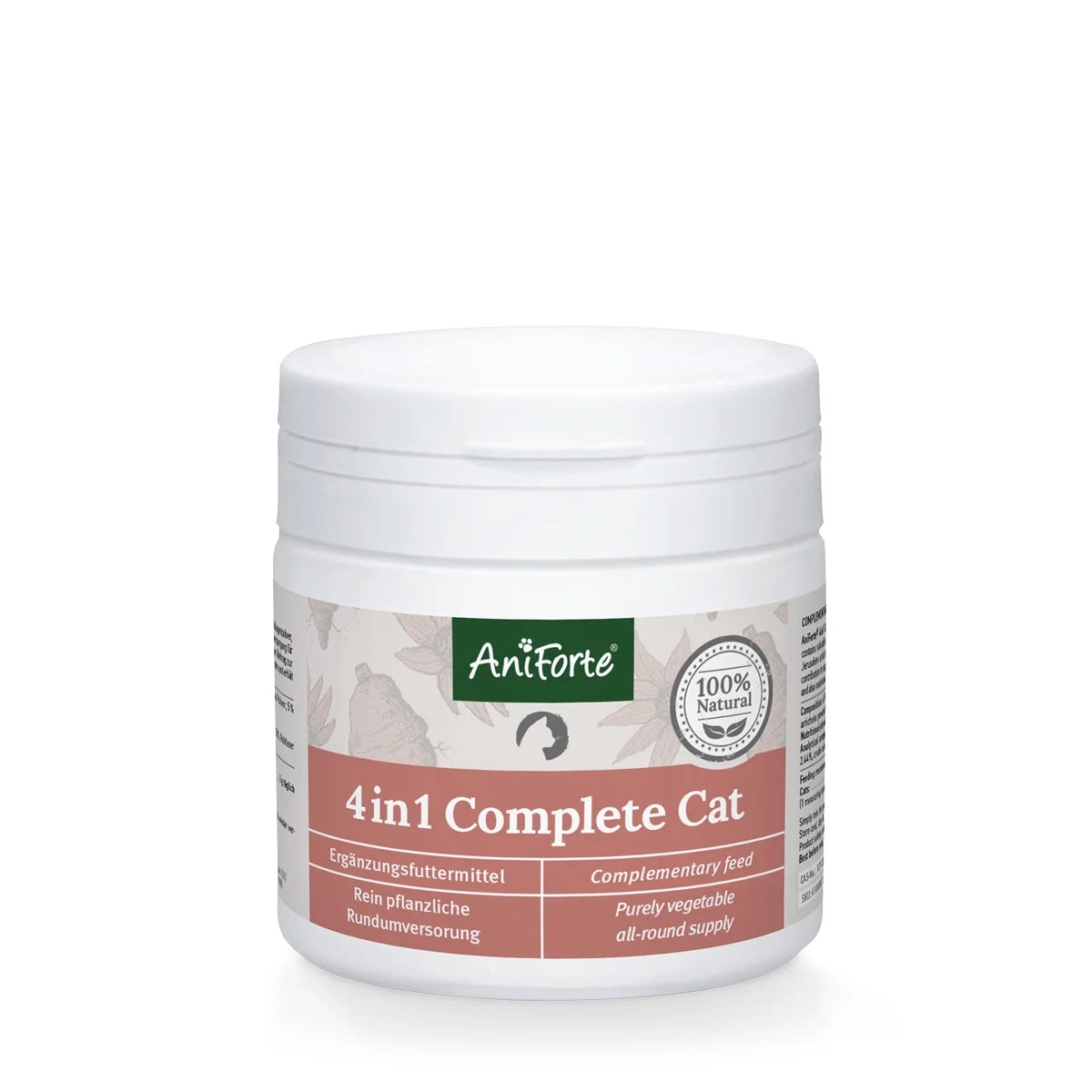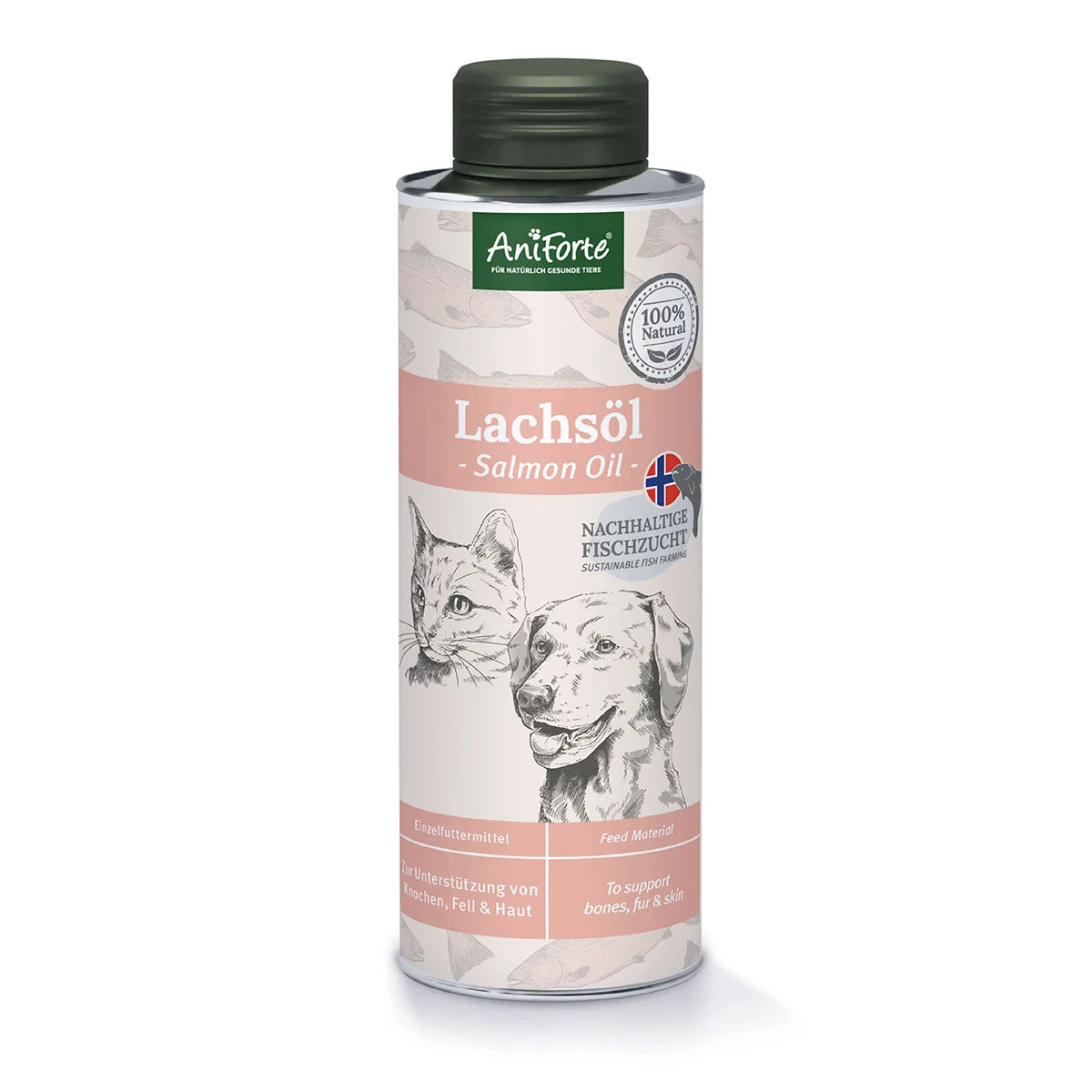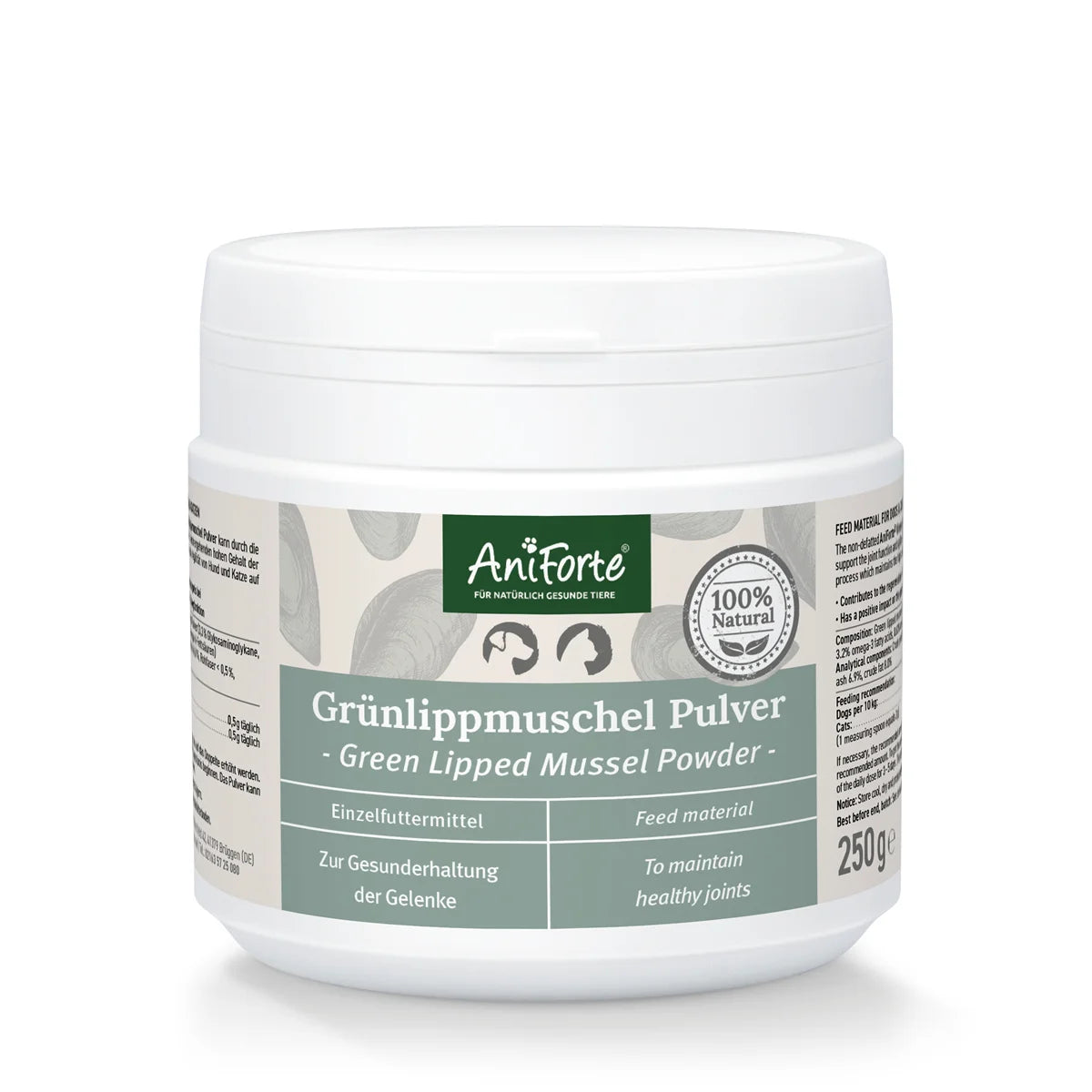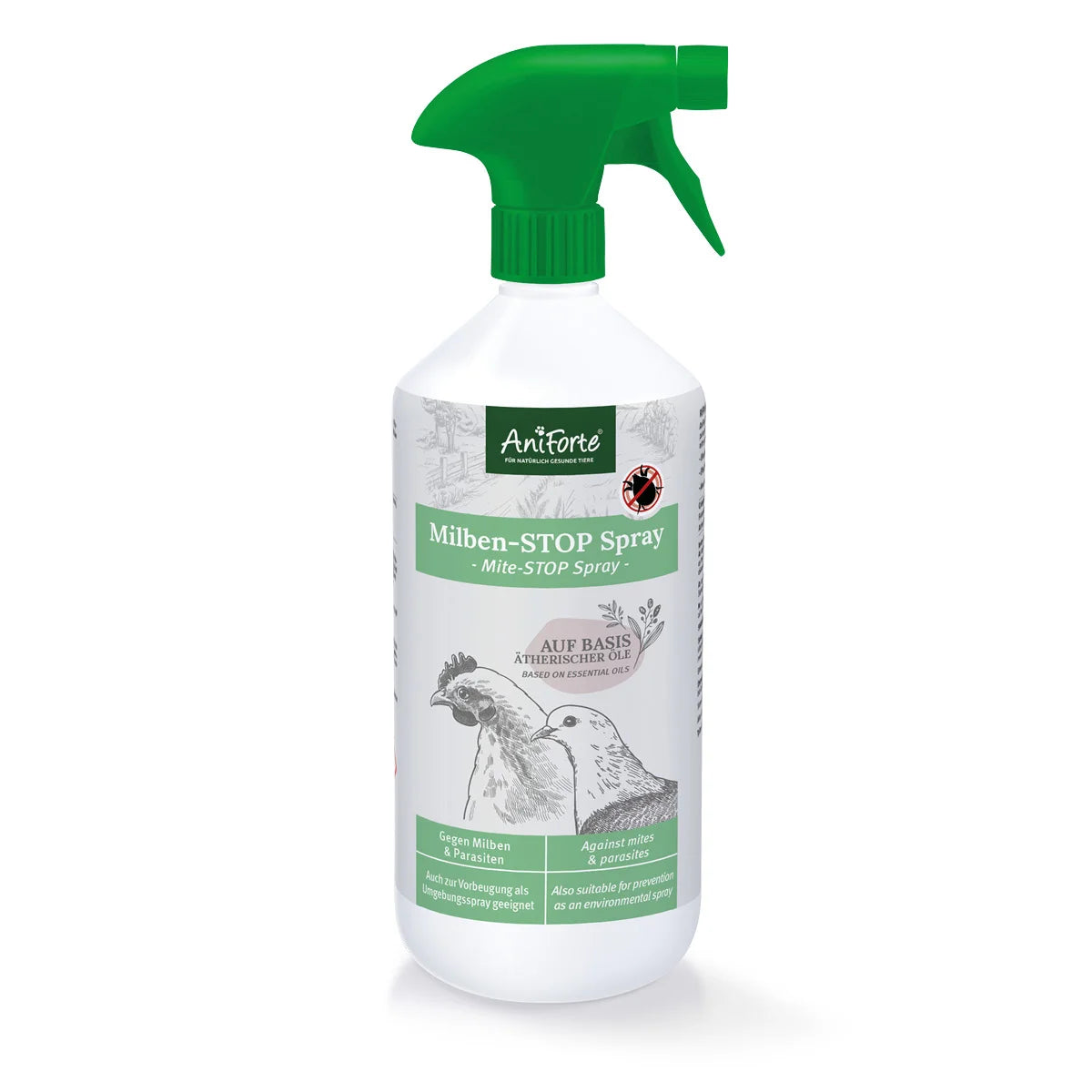
Inflammation of the stomach is common in dogs and has multiple causes. As with us humans your dog will suffers from nausea, cramps or pain. Nevertheless, gastritis often goes undetected. Today, our canine nutritionist Ana explains how you can detect and combat gastritis.
What is gastritis?
The word "gastritis" is derived from the Greek gaster (= stomach) and the ending "itis" (= inflammation). It is also referred to as inflamed stomach lining. Acute gastritis is associated with abdominal pain and vomiting. Your dog then eats lots of grass and drinks large quantities. With appropriate action, the symptoms are treatable - but it must be first detected.
Causes of acute gastritis in your dog
To help your pet, you should recognize the possible causes of acute gastritis. Stomach problems are unfortunately common in many dogs. They can be caused by bad quality or spoiled food, but also infections or severe parasite infestation can cause disease of the gastrointestinal system.
The swallowing of a foreign body can usually be quickly diagnosed - infections with bacteria or viruses due to spoiled food, a poisoning or certain drugs as triggers, however, are not always immediately recognizable as causes of gastric irritation. In addition, physical or mental pressure can cause acute stomach discomfort in dogs.
Chronic gastritis: Why dog stomachs are vulnerable
Acute gastritis is one, recurring gastric discomfort that also goes unrecognized, the other. They burden the animal and the symptoms also affect the dog owner. Chronic gastritis can affect all dog breeds, young and old.
Disturbances in stomach digestion go back to the basic nature of the dog‘s stomach: Nature has created the dog as a hunter and prey eater. In the wild he had to quickly snare it‘s prey, similar to the wolf, to be ahead of the competition. Despite evolutionary developments, your dog's stomach has stopped at the level of a hunter's development. The gastrointestinal tract is relatively simple.
Dog’s digestion process:
- Feed intake in large quantities
The stomach of your dog is a so-called sack stomach, which is very stretchy and flexible and hangs in the abdomen of the dog. From inside, the stomach is lined with a mucous membrane.
- Start of digestion
In the sack stomach the proteins are dissolved by the pepsin and the hydrochloric acid - both components of the gastric acid. The stomach acid contributes significantly to the digestion and kills many pathogens in the diet. At the same time it is so aggressive (ph value of 1-2) that the stomach would digest itself during the digestion process - if it were not lined with the protective mucus layer from the inside.
- Further digestion in the small and large intestine
The predigested, acidic food pulp now enters the small intestine or its first part, the duodenum of your dog. Later then into the large intestine, until excretion.
Therefore it's crucial for the healthy digestion is the resistant gastric mucous membrane. Its natural protective barrier withstands many attacks, but can also be permanently bombarded. In the end, irritation eventually leads to inflammation, as acids penetrate into the deep layers of the stomach tissue.
Causes of your dog's chronic abdominal pain
As mentioned earlier, chronic gastritis is often even more difficult to detect. Triggers for inflammation of the gastric mucosa can be:
- Incorrect feeding or incorrect nutrition of the dog
This often leads to a food intolerance or feed allergy.
- Permanent medication
- Permanent stress
Often affected are especially sports dogs and animal welfare dogs.
- Bacteria
Here, the bacterium Helicobacter pylori is suspected to trigger violent inflammation.
- Liver disease
- Disease of the pancreas
- Endocrine disorders such as Addison's disease, hypothyroidism (thyroid)
- Kidney disease
In the long run, the dog's own gastric acid and its enzymes attack the gastric mucosa and underlying muscle layer.
How do I recognize gastritis in my dog?
Gastric inflammation requires the attention of the dog owner, because a disease of internal organs is unfortunately not directly obvious. If you suspect that your dog may have gastritis, you should watch your pet closely and look for the following symptoms of gastritis:
- heartburn/indegestion
is noticeable by: smacking, ingestion, salivation, frequent yawning, increased eating of grass, soil or even indigestible things.
- anorexia/loss of apetite
makes itself noticeable: feed refusal. Often the dogs are referred to as grumpy eaters, they have the experience that they feel unwell after feeding.
- frequent morning sickness
becomes noticeable: feeding your dog later during the day.
- restlessness
makes itself noticeable: frequent changes of laying/sleeping places.
- much rest and sleep
- listlessness
- Strong bad breath
- curled back
- pain in the stomach and intestinal area
- gastrointestinal sounds
- Desire for a lot of (cold) water
- vomiting
For mild gastritis: aqueous discharge with white foam or immediate vomiting of ingested food.
In severe gastritis: The gastric contractions are accompanied by a strong abdominal press - intestinal content is ejected with the vomit and it results in a yellow-green colour.
In severe gastritis: The gastric mucosa with its capillary and capillaries is already attacked, you can see a slight pink colour of the ejected mass. If there is blood in the stool, this indicates bleeding of the gastrointestinal area.
Diagnosis of gastritis
In order to prevent acute suffering and chronic complaints for your dog, the gastritis should be detected early. This is not always so easy, because the sense of pain of the four-legged friends is different in each individual as by we humans. If your pet shows only a few symptoms, it could have a very high pain threshold. The safest solution is to leave the final diagnosis to a veterinarian or veterinary clinic.
There, a gastroscopy or an ultrasound examination can provide information about the condition of your four-legged friend. With a gastroscopy it is examined from the inside to detremine whether there is gastritis. In an ultrasound examination is "lit" from the outside to see, for example, whether the stomach walls are thickened. There are also different blood and faeces examinations. So you can be sure, what is affecting your pets stomach.
Treating gastritis in your dog
The therapy should always be based on the discovered cause. Often, this requires a lot of patience from humans and animals. In conventional medicine, gastritis is treated with antibiotics and gastric acid inhibitors, so-called proton pump inhibitors and sucralfate preparations. Furthermore, your pet is probably switched to light food in the form of special wet food.
Alternatively, an individualized diet change is usually recommended. This can be accompanied by stomach-calming measures on a natural basis. This variant may be long-term, but is accordingly effective and gentle, if it is maintained.
I wish your dogs a good digestion and stable health!
Ana

